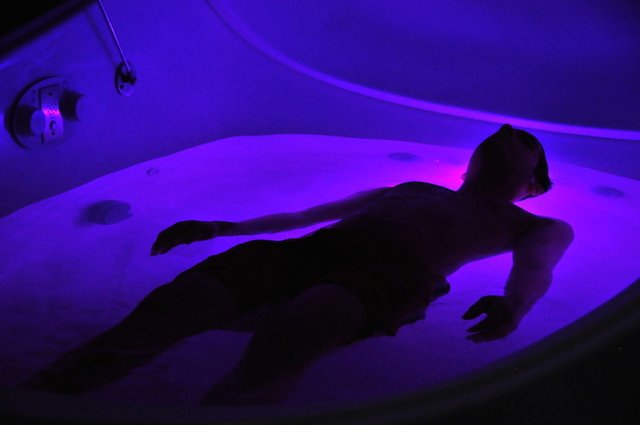Sensory Deprivation Therapy: What is it and Why I like it.

I recently went in for another session of Sensory Deprivation Therapy. This was my 13th or so experience with the therapy.
Sensory Deprivation Therapy is known by a few names; Perceptual Isolation, Restrictive Enviromental Stimulation Therapy (R.E.S.T.) and more widely known as Floating. It is a practice that has been around since 1954.
The premise is quite simple. Here's a breakdown...
*The isolation tank is partially filled with a high saline or salt concentrate allowing the body to float. The Epsom Salt is also
benficial for the skin and muscles.
*The water temperature is close to the natural temperature of the skin.
*In order to get the full sensory deprivation effect the lid or door is closed (this is optional and can be progressed to) and
the lights are turned off (also optional for beginners).
*When the head is tilted back in the water the neck should go to a comfortable and joint relieving posistion; with this the water should cover the ears. This muffles the sound coming in. Using ear plugs helps silence any other noises that may be present.
Normally your senses are constantly sending your brain signals, information, and your brain is constantly processing this information. When you remove those signals and information your brain is allowed to work through other things, to dive deeper into the true self of your body and not be concerned with the surroundings. This helps to relieve stress that has been lingering , it brings out mental hurdles you may have been hanging on to.
Sensory Deprivation Therapy isn't a new idea.
The first known uses were in 1954 during studies of the human body and brain function after a subject was deprived of their senses for different time periods. The wikipedia page describes the orgin as "The isolation tank was developed in 1954 by John C. Lilly, a medical practitioner and neuropsychiatrist.[1][2][3] During his training in psychoanalysis at the US National Institute of Mental Health (NIMH), Lilly experimented with sensory deprivation. After 10 years of experimentation without taking any psychoactive substances, he tried floating in combination with a psychedelic agent, mostly LSD (at that time LSD was legal in the United States)" via https://en.wikipedia.org/wiki/Isolation_tank
In 1980 the movie Altered States was released. It is a biographical dramatization that shows the work and processes of John C. Lilly in his quest to build and study the tanks as an alternative source of therpy. Recently TV shows such as Fringe, The Simpsons, and Stranger Things have featured isolation tanks and their effects.
My experiences while in the float tanks have been amazing to myself. I have relieved a lot of stress and worked through some personal blockages that have been holding me back and dealt with some unresolved emotional issues.
It is reccommended that first time "Floaters" go in without any expectations. One reason is to not trick the mind into false results. Another reason is to not underwhelm the user. Going in with the expectation to experience a level that others have had using this form of therapy, especially those who have undergone multiple sessions can leave the new user feeling shorted.
I suggest at least 3 separate sessions, alternating the time periods inside, to fully understand the process and to immerse yourself into the very begining stages of what this therapy has to offer.
If you'd like to see my wife and I talking about our reasons why we love Sensory Deprivation Therapy see our video linked below.